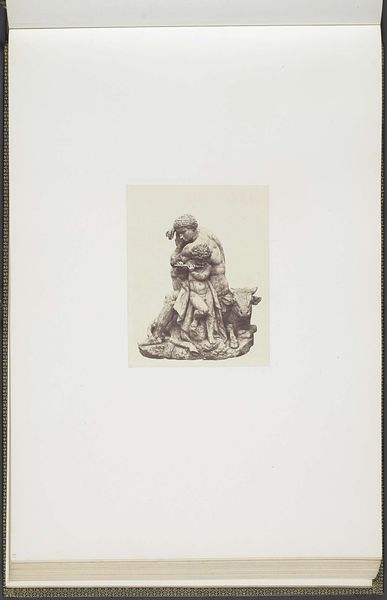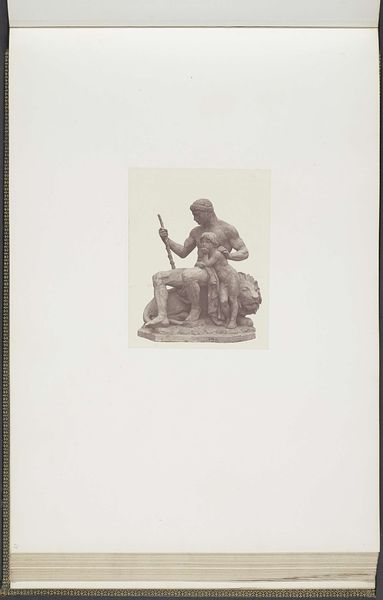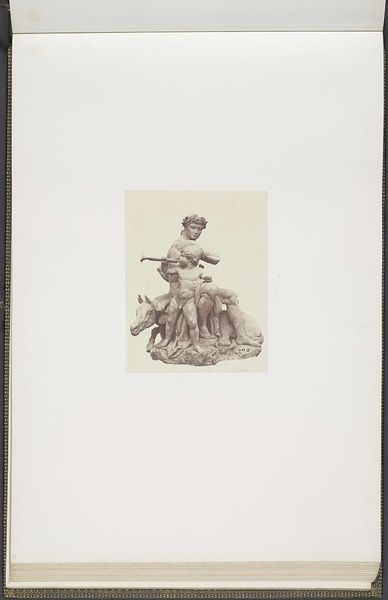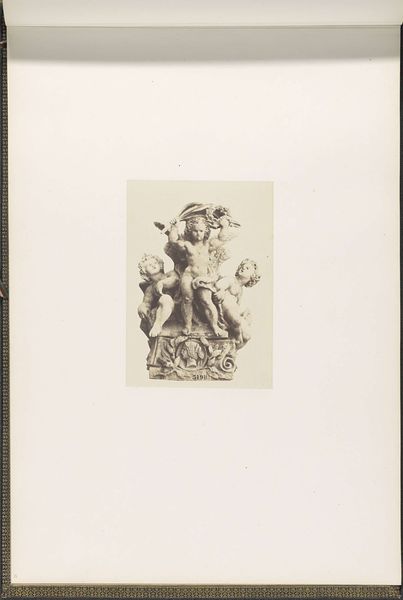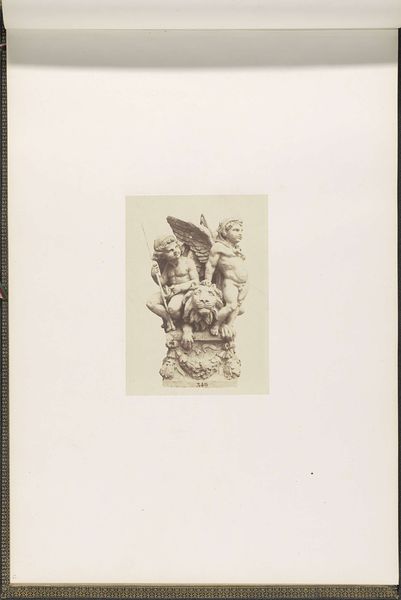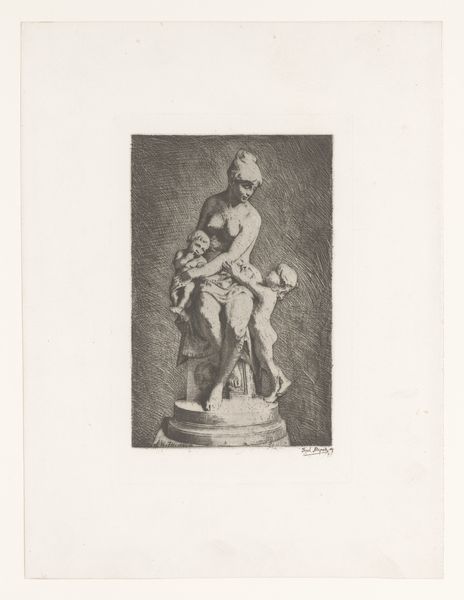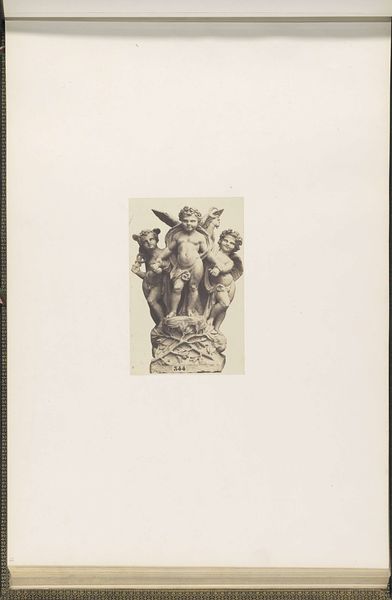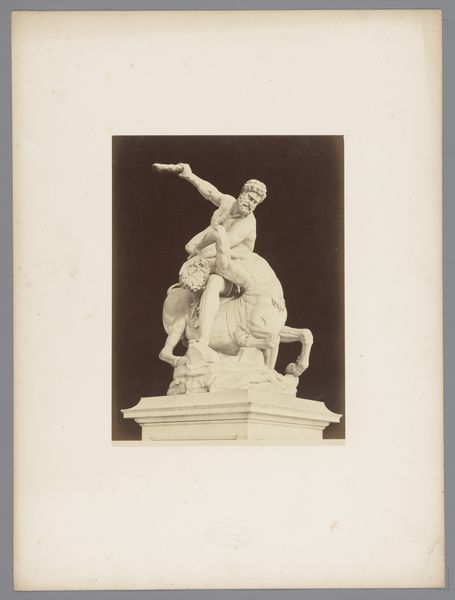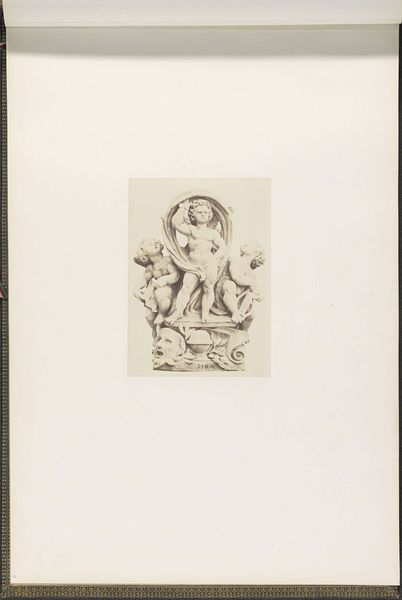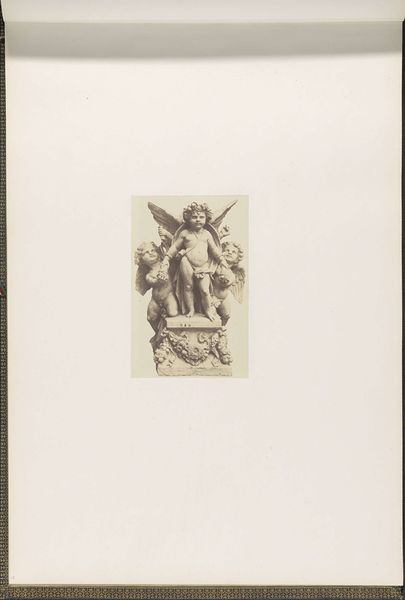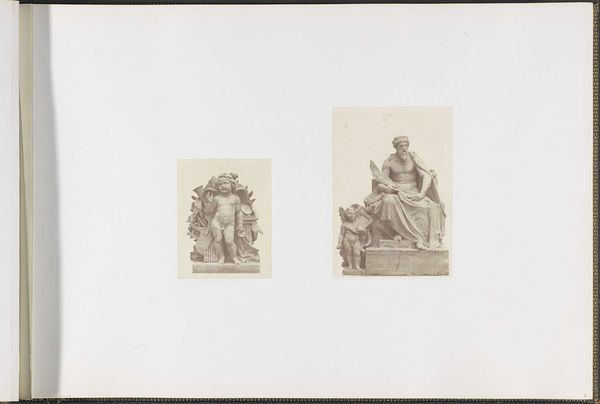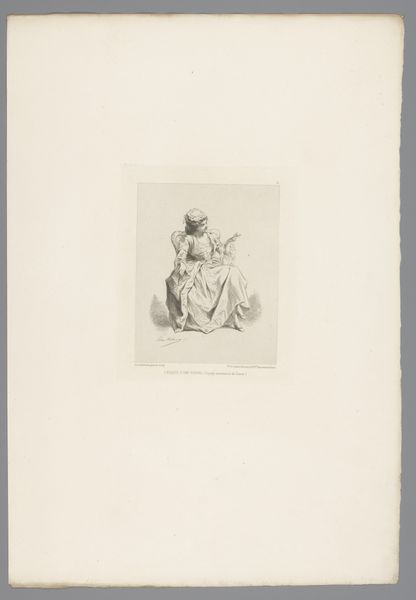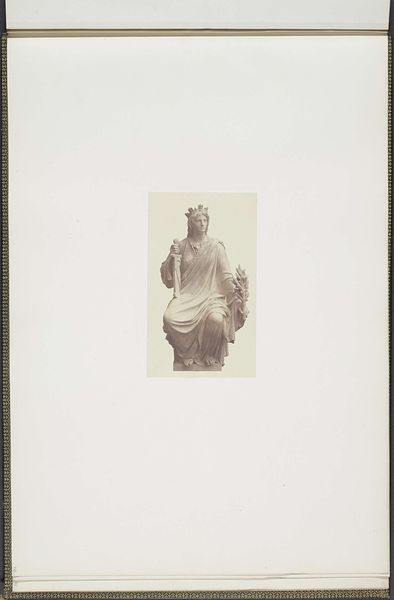
Gipsmodel voor beeldhouwwerk op het Palais du Louvre: "L'Ordre" door Antoine-Louis Barye c. 1855 - 1857
0:00
0:00
bronze, photography, sculpture
#
bronze
#
photography
#
sculpture
#
history-painting
#
academic-art
#
realism
Dimensions: height 382 mm, width 560 mm
Copyright: Rijks Museum: Open Domain
Editor: Here we have a photograph by Edouard Baldus of Antoine-Louis Barye's plaster model for a sculpture called "L'Ordre", dating from around 1855-1857. I’m struck by the contrast between the rough texture of the plaster model and the smooth surface of the photographic print. How does that interplay influence your reading of the artwork? Curator: The textural contrast certainly grabs our attention. However, as a Formalist, I am primarily interested in the internal dynamics of the composition. Observe how Barye’s arrangement – the strong vertical of the sword played against the curves of the figures creates an aesthetic balance. Note also that Barye masterfully deploys the principles of Classical sculpture by positioning each part of the body in opposition to the one next to it – weight on one leg, turn of the head to balance the swing of an arm. Do you see that creating visual harmony? Editor: I see that now. The opposition of the figures makes it visually satisfying. Is there anything else in the composition you think is noteworthy? Curator: Absolutely. We need to focus on Barye's ability to merge Realist, contemporary subject matter with Neoclassical structure. How are those muscular figures posed, arranged and illuminated to create something almost diagrammatic in the way they show ‘order’? The photograph emphasizes the lines and shadows, underscoring the solid geometry on which the figures are created. The play of light is key here; the light, especially as captured through the photographic process itself, is very revealing of form, line and three-dimensional volume. Editor: That’s fascinating. I had focused so much on the texture of the plaster. Now I really see how the formal aspects create the idea of "Order". Curator: Exactly! We observe the success of the image when those lines, surfaces, shapes and the arrangements communicate a central, almost mathematical aesthetic logic in and of themselves. Editor: That’s really helped me understand the power of visual composition and how to look past the obvious. Thanks for sharing your insight!
Comments
No comments
Be the first to comment and join the conversation on the ultimate creative platform.
